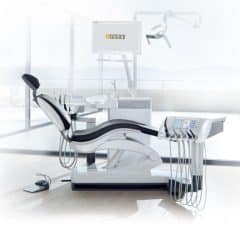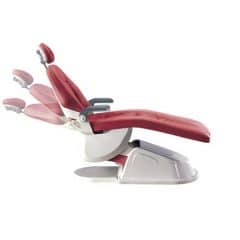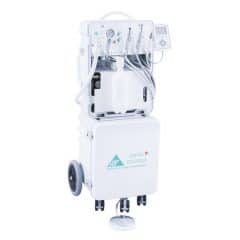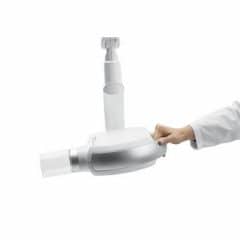
Dentsply Sirona TENEO dental unit
Dental units are often incorrectly called dental chairs, but for the purposes of this guide we will distinguish between the two terms. A dental chair is one of the components of a complete unit.
The equipment installation may vary from one dental unit to another, but there are general trends. Almost all units include aspiration equipment and an instrument holder with the tools necessary to provide patient care. These include:
- Handpieces: these include turbines, contra-angles and micromotors to drill a tooth quickly
- The air gun for drying a specific area in the mouth
- Scalers

Dental chair
The patient’s chair is an important part of the unit: this is where the consultation takes place. For all chairs, it is possible to adjust the height and inclination of the seat as well as the position of the headrest.
Other components of a dental unit include:
- The scialytic lamp that allows the dentist to have a shadow-free view of the patient’s mouth
- Aspirating tools that allow saliva to be aspirated near sublingual glands
- The spittoon so patients can rinse out their mouths after receiving care
- The pedal that allows the dentist to activate the instruments
All reusable tools are sterilized after each patient. Many items are disposable and single-use.





 more advanced dental units offer additional options such as a video monitor or
more advanced dental units offer additional options such as a video monitor or 

